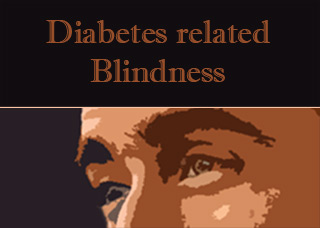
Diabetic retinopathy is said to be the leading cause of blindness in the adults in America. Diabetic retinopathy progresses in two stages. The disease sets in when the small vessels that carry blood to and from the eye swell and leak. As the health of the retina worsens, slow vision loss may take place. It may also lead to “proliferative†retinopathy where new abnormal blood vessels form. These blood vessels have thin walls, due to which they may scar and bleed, which may result in sudden vision loss.
“The more severe the retinopathy, the lower the blood flow to the retina,†says David Huang of the Keck School of Medicine, University of Southern California, Los Angeles. This observation may lead to the development of enhanced ways to early diagnose this particular condition.
Huang and colleagues have made use of a spectroscopic technology called the optical coherence tomography (OCT). This technology is used to sense the amount of blood flowing through the retinal blood vessels. Through this technique, the scientists could theorize the amount of blood flow in the retinal veins of people with diabetes. It was also stated that less amount of blood flow was noticed in those people who suffered from advanced proliferative retinopathy.
Presently, fluorescein angiography is said to be the most common method used to detect retinopathy. This method is moderately invasive, and may also cause nausea, vomiting or may even cause severe allergic reactions. Optical coherence tomography, on the other hand, is believed to be a relatively less invasive way of diagnosing retinopathy. It is hoped that these factors may aid ophthalmologists in easily diagnosing this condition in patients.
These findings are described in the special Interactive Science Publishing issue of Optics Express, the journal of Optical Society.
